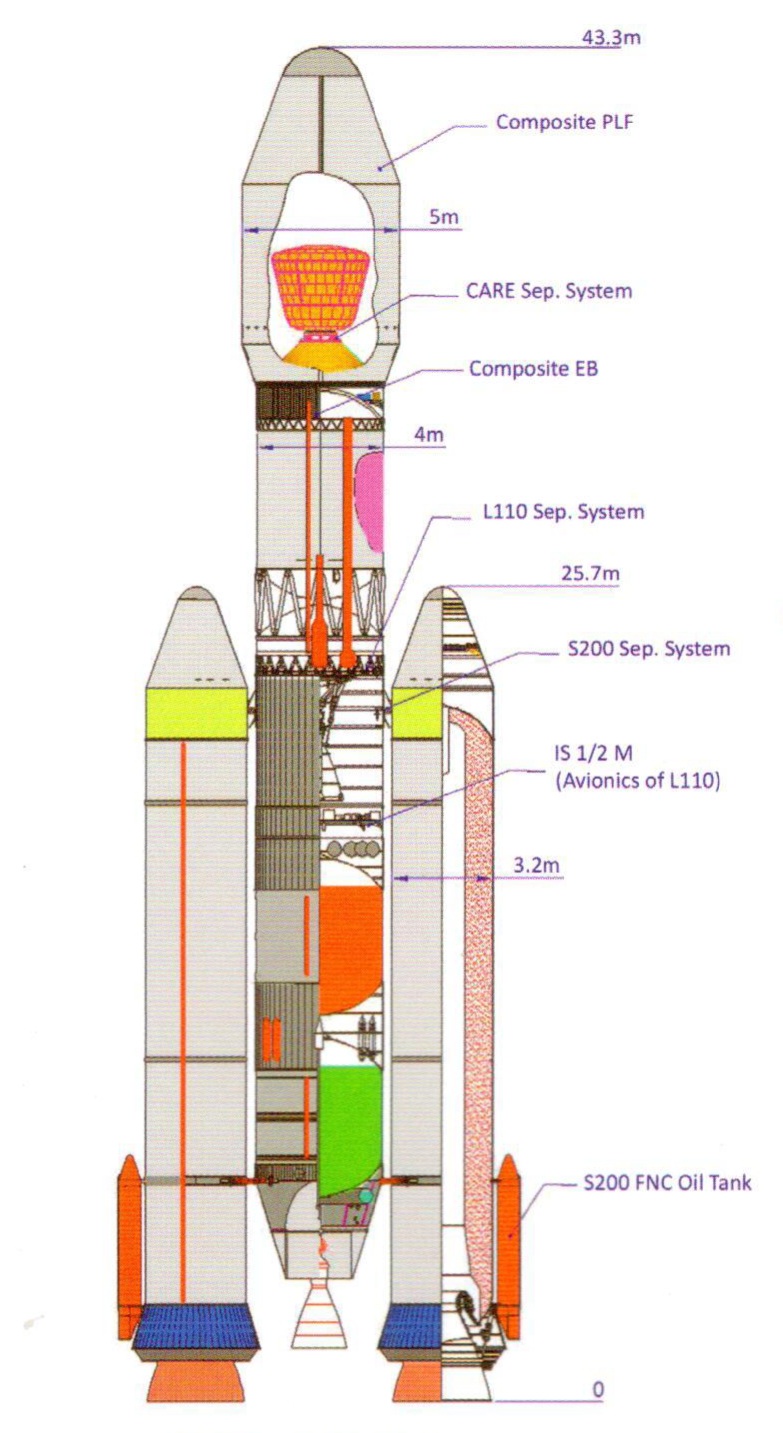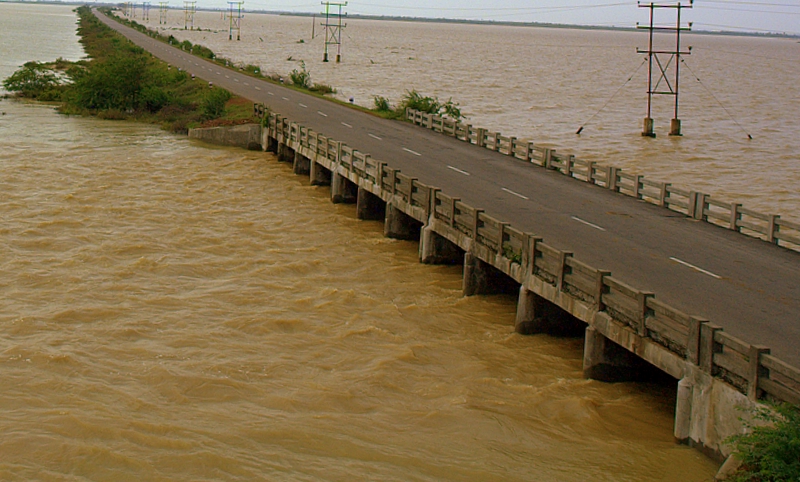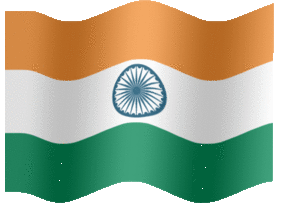|
Satish Dhawan Space Center
Satish Dhawan Space Centre – SDSC (formerly Sriharikota Range – SHAR) is the primary spaceport of the Indian Space Research Organisation (ISRO), located in Sriharikota, Tirupati district, Andhra Pradesh. The spaceport is located on an island off the east coast of India, surrounded by Pulicat Lake and the Bay of Bengal. The distance of Sriharikota from Chennai is . The Centre currently has three functioning launch pads used for launching sounding rockets, polar satellites and geosynchronous satellites. India's Lunar exploration probes Chandrayaan-1, Chandrayaan-2, Chandrayaan-3, Mars Orbiter Mission, solar research mission Aditya-L1 and space observatory XPoSat were also launched from SDSC. Originally called Sriharikota Range (SHAR), the centre was renamed on 5 September 2002 as a tribute to ISRO's former chairman Satish Dhawan with retaining its original acronym and is referred as SDSC-SHAR. History Sriharikota island was chosen in 1969 for a satellite launching statio ... [...More Info...] [...Related Items...] OR: [Wikipedia] [Google] [Baidu] |
LVM3
The Launch Vehicle Mark-3 or LVM3 (previously referred as the Geosynchronous Satellite Launch Vehicle Mark III or GSLV Mk III) is a Multistage rocket, three-stage medium-lift launch vehicle developed by the ISRO, Indian Space Research Organisation (ISRO). Primarily designed to launch communication satellites into geostationary orbit, it is also due to launch crewed missions under the Indian Human Spaceflight Programme. LVM3 has a higher payload capacity than its predecessor, Geosynchronous Satellite Launch Vehicle, GSLV. After several delays and a sub-orbital test flight on 18 December 2014, ISRO successfully conducted the first orbital test launch of LVM3 on 5 June 2017 from the Satish Dhawan Space Centre. Total development cost of project was . In June 2018, the Union Cabinet approved to build 10 LVM3 rockets over a five-year period. The LVM3 has launched Crew Module Atmospheric Re-entry Experiment, CARE, India's space capsule recovery experiment module, Chandrayaan-2 and Ch ... [...More Info...] [...Related Items...] OR: [Wikipedia] [Google] [Baidu] |
Polar Satellite Launch Vehicle
The Polar Satellite Launch Vehicle (PSLV) is an expendable medium-lift launch vehicle designed and operated by the Indian Space Research Organisation (ISRO). It was developed to allow India to launch its Indian Remote Sensing (IRS) satellites into Sun-synchronous orbits, a service that was, until the advent of the PSLV in 1993, only commercially available from Russia. PSLV can also launch small size satellites into Geostationary Transfer Orbit (GTO). Some notable payloads launched by PSLV include India's first lunar probe Chandrayaan-1, India's first interplanetary mission, Mars Orbiter Mission (Mangalyaan), India's first space observatory, Astrosat and India's first Solar mission, Aditya-L1. PSLV has gained credibility as a leading provider of rideshare services for small satellites, owing to its numerous multi-satellite deployment campaigns with auxiliary payloads, usually ride-sharing along with an Indian primary payload. As of June 2022, PSLV has launched 345 fo ... [...More Info...] [...Related Items...] OR: [Wikipedia] [Google] [Baidu] |
Chennai
Chennai, also known as Madras (List of renamed places in India#Tamil Nadu, its official name until 1996), is the capital city, capital and List of cities in Tamil Nadu by population, largest city of Tamil Nadu, the southernmost states and territories of India, state of India. It is located on the Coromandel Coast of the Bay of Bengal. According to the 2011 Census of India, 2011 Indian census, Chennai is the List of most populous cities in India, sixth-most-populous city in India and forms the List of million-plus urban agglomerations in India, fourth-most-populous urban agglomeration. Incorporated in 1688, the Greater Chennai Corporation is the oldest municipal corporation in India and the second oldest in the world after City of London Corporation, London. Historically, the region was part of the Chola dynasty, Chola, Pandya dynasty, Pandya, Pallava dynasty, Pallava and Vijayanagara Empire, Vijayanagara kingdoms during various eras. The coastal land which then contained th ... [...More Info...] [...Related Items...] OR: [Wikipedia] [Google] [Baidu] |
Bay Of Bengal
The Bay of Bengal is the northeastern part of the Indian Ocean. Geographically it is positioned between the Indian subcontinent and the Mainland Southeast Asia, Indochinese peninsula, located below the Bengal region. Many South Asian and Southeast Asian Countries of the Bay of Bengal, countries are dependent on the Bay of Bengal. Geopolitically, the bay is bounded on the west and northwest by India, on the north by Bangladesh, and on the east by Myanmar and the Andaman and Nicobar Islands of India. Its southern limit is a line between Sangaman Kanda, Sri Lanka, and the northwesternmost point of Sumatra, Indonesia. Cox's Bazar Beach, Cox's Bazar, the longest sea beach in the world and Sundarbans, the largest mangrove forest and the natural habitat of the Bengal tiger, are located along the bay. The Bay of Bengal occupies an area of . A number of large rivers flow into the Bay of Bengal: the Ganges–Hooghly River, Hooghly, the Padma River, Padma, the Brahmaputra River, Brahmaputr ... [...More Info...] [...Related Items...] OR: [Wikipedia] [Google] [Baidu] |
Pulicat Lake
Pulicat Lake is the second-largest brackish-water lagoon in India (after Chilika Lake), measuring . A major part of the lagoon lies in the Tirupati district of Andhra Pradesh. The lagoon is one of three important wetlands that attracts northeast monsoon rainclouds during the October-to-December season. The lagoon comprises the following regions: Pulicat Lake (Andhra Pradesh and Tamil Nadu), Marshy/Wetland Land Region (AP), Venadu Reserve Forest (AP), and Pernadu Reserve Forest (AP). The lagoon was cut across in the middle by the Sriharikota Link Road, which divided the water body into lagoon and marshy land. The lagoon encompasses the Pulicat Lake Bird Sanctuary. The barrier island of Sriharikota separates the lagoon from the Bay of Bengal and is home to the Indian Space Research Organisation's Satish Dhawan Space Centre. History In the 1st century, the anonymous mariner who wrote ''Periplus of the Erythraean Sea'' listed Podouke (Pulicat) as one of the three ports on the ... [...More Info...] [...Related Items...] OR: [Wikipedia] [Google] [Baidu] |
Spaceport
A spaceport or cosmodrome is a site for launching or receiving spacecraft, by analogy to a seaport for ships or an airport for aircraft. The word ''spaceport''—and even more so ''cosmodrome''—has traditionally referred to sites capable of launching spacecraft into Earth's orbit, Earth orbit or on interplanetary trajectories. However, rocket launch sites for Sub-orbital spaceflight, sub-orbital Sub-orbital spaceflight, spaceflights are also sometimes called spaceports, especially as new and proposed facilities for suborbital commercial spaceflight are often branded as "spaceports." Space station, Space stations and proposed future lunar bases are also sometimes referred to as spaceports, particularly when envisioned as nodes for further interplanetary travel. Spaceports are evolving beyond traditional government-run complexes into multi-functional aerospace hubs, increasingly driven by private companies such as SpaceX, Blue Origin, and Virgin Galactic. A prominent example i ... [...More Info...] [...Related Items...] OR: [Wikipedia] [Google] [Baidu] |
Agnibaan
Agnibaan (Sanskrit, ISO: 'Fire', 'Arrow', ) is a three-stage small-lift launch system currently under development, produced by AgniKul Cosmos in Chennai, Tamil Nadu, India. It is capable of placing a 100 kg (220 lb) satellite into a 700 km (430 mi) orbit. The rocket will be 18 meters long with a diameter of 1.3 meters and a lift-off mass of 14,000 kg (31,000 lb). The first stage is powered by seven Agnilet engines. The second stage is powered by the same Agnilet engine which will have a larger nozzle than the sea level nozzle to optimize it for vacuum. Design Engines Agnibaan will use clustered engines in various configurations in the first stage, depending on the payload. It will also use a vacuum optimized version of the Agnilet in the second stage. These engines use liquid oxygen and kerosene as the oxidizer and fuel. The first stage of the Agnibaan is powered by 7 Agnilet engines, each with a thrust of 25 kN (yet to be tested) at sea l ... [...More Info...] [...Related Items...] OR: [Wikipedia] [Google] [Baidu] |
Agnibaan SOrTeD
Agnibaan ''SOrTeD'' (short form of ''SubOrbital Technological Demonstrator'') is a suborbital technological demonstrator of the Agnibaan launch vehicle, manufactured by Indian space startup AgniKul Cosmos. Description The SOrTeD mission is a single-stage launch vehicle demonstration that is powered by a semi-cryogenic engine called the Agnilet. The 6.2 meter-tall vehicle has an elliptical nose cone at the top to protect the payload from harsh conditions during the flight. Unlike traditional sounding rockets that typically launch from guide rails, Agnibaan SOrTeD lifts off vertically and follows a predetermined trajectory while executing a precisely coordinated series of maneuvers during flight. This innovative approach sets Agnibaan apart and highlights the advanced technology and capabilities employed by AgniKul Cosmos for its maiden sub-orbital flight. For flight control, the vehicle is equipped with four carbon composite fins to provide passive control. The active pitch ... [...More Info...] [...Related Items...] OR: [Wikipedia] [Google] [Baidu] |
Next Generation Launch Vehicle
The Next Generation Launch Vehicle (NGLV) is a family of three-stage Reusable launch vehicle#Partially reusable launch systems, partially reusable Medium-lift launch vehicle, medium to super heavy-lift launch vehicle, currently under development by the ISRO, Indian Space Research Organisation (ISRO). The family of these vehicles are designed to replace currently operational systems like the Polar Satellite Launch Vehicle, PSLV and Geosynchronous Satellite Launch Vehicle, GSLV. Previously referred to as Unified Launch Vehicle (ULV), the project is now being called as project Soorya. This family of three launchers were previously being designed for replacing the different core propulsion modules of PSLV, GSLV, and LVM3 respectively with a common semi-cryogenic engine and hence it was named as ULV. Unlike the latest proposal of the launcher, the initial proposals were planned to be Expendable launch system, expendable. But the new proposals under the name of NGLV suggests launcher ... [...More Info...] [...Related Items...] OR: [Wikipedia] [Google] [Baidu] |
Cartosat-1
Cartosat-1 (formerly IRS-P5) is a stereoscopic Earth observation satellite in a Sun-synchronous orbit, and the first one of the Cartosat series of satellites. The eleventh satellite of ISRO in Indian Remote Sensing Satellite (IRS) series. The satellite was launched by Indian Space Research Organisation and is operated by NTRO. Weighing around 1560 kg at launch, its applications will mainly be towards cartography in India. Launch It was launched by PSLV-C6, on 5 May 2005 at 04:44:00 UTC from the newly built Second Launch Pad at Sriharikota. Images from the satellite will be available from GeoEye for worldwide distribution. The satellite covers the entire globe in 1867 orbits on a 126-day cycle. Adjacent paths are covered by a separation of eleven days. History Department of Space (DoS), government of India, has launched a series of satellites for Earth's resource management and monitoring. These satellites have been very successful in providing data in various sc ... [...More Info...] [...Related Items...] OR: [Wikipedia] [Google] [Baidu] |
PSLV-C6
PSLV-C6 was the sixth operational launch and overall ninth mission of the PSLV program. This launch was also the fifty-fourth launch by Indian Space Research Organisation since its first mission on 1 January 1962. The vehicle carried and injected India's two satellites; Cartosat-1 (a.k.a. IRS-P5) and HAMSAT into the Sun-synchronous orbit. PSLV-C6 was launched at 04:44 hours Coordinated Universal Time (10:14 hours Indian Standard Time) on 5 May 2005 from the second launch pad of the Satish Dhawan Space Centre. Mission highlights *Sixth operational launch of the PSLV program. *Overall ninth mission of the PSLV program. *Overall fifty-fourth launch by Indian Space Research Organisation. *First flight to be launched from the second launch pad of Satish Dhawan Space Centre. *Carried and injected two satellites built by ISRO. Mission parameters * Mass: ** ''Total liftoff weight:'' ** ''Payload weight:'' * Overall height: * Propellant: ** ''First stage:'' Solid HTPB based (138.0 + 6 ... [...More Info...] [...Related Items...] OR: [Wikipedia] [Google] [Baidu] |
NVS-02
NVS-02 is the second satellite in the NVS series, equipped with navigation payloads in L1, L5, and S bands, as well as a ranging payload in C-band. The vehicle is based on the conventional I-2K bus platform, with a lift-off mass of 2250 kg and a power handling capacity of approximately 3 kW. It was planned to replace IRNSS-1E at the orbital slot of 111.75° East. Description NVS-02, the second satellite in the NVS series is configured with Navigation payload in L1, L5 and S bands in addition to ranging payload in C-band like its predecessor-NVS-01.It was planned to provide two types of services, namely, ''Standard Positioning Service (SPS)'' and ''Restricted Service (RS)''. SPS provides a position accuracy of better than 20 m (2σ) and timing accuracy better than 40 ns (2σ) over the primary service Area. NVS-02 satellite was designed, developed and integrated at U R Rao Satellite Centre (URSC) with the support of other satellite-based work Centres. On completio ... [...More Info...] [...Related Items...] OR: [Wikipedia] [Google] [Baidu] |







